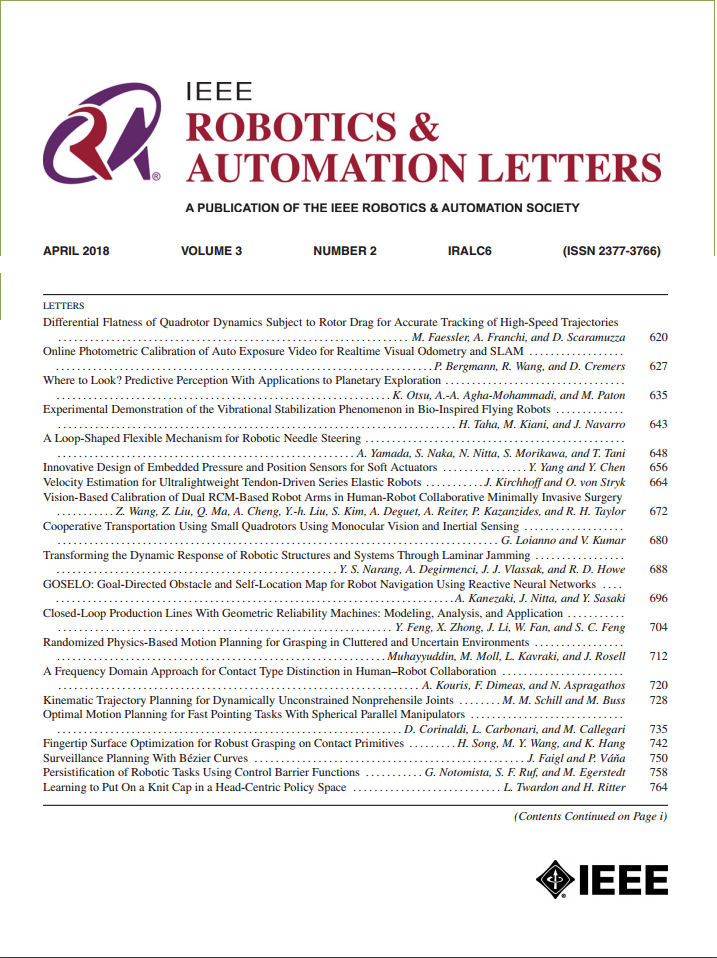TCB-VIO: Tightly-Coupled Focal-Plane Binary-Enhanced Visual Inertial Odometry
IF 5.3
2区 计算机科学
Q2 ROBOTICS
引用次数: 0
Abstract
Vision algorithms can be executed directly on the image sensor when implemented on the next-generation sensors known as focal-plane sensor-processor arrays (FPSP)s, where every pixel has a processor. FPSPs greatly improve latency, reducing the problems associated with the bottleneck of data transfer from a vision sensor to a processor. FPSPs accelerate vision-based algorithms such as visual-inertial odometry (VIO). However, VIO frameworks suffer from spatial drift due to the vision-based pose estimation, whilst temporal drift arises from the inertial measurements. FPSPs circumvent the spatial drift by operating at a high frame rate to match the high-frequency output of the inertial measurements. In this letter, we present TCB-VIO, a tightly-coupled 6 degrees-of-freedom VIO by a Multi-State Constraint Kalman Filter (MSCKF), operating at a high frame-rate of 250 FPS and from IMU measurements obtained at 400 Hz. TCB-VIO outperforms state-of-the-art methods: ROVIO, VINS-Mono, and ORB-SLAM3.TCB-VIO:紧密耦合焦平面二元增强视觉惯性里程计
视觉算法在下一代焦平面传感器处理器阵列(FPSP)上实现时,可以直接在图像传感器上执行,其中每个像素都有一个处理器。fpsp极大地改善了延迟,减少了从视觉传感器到处理器的数据传输瓶颈相关的问题。fpsp加速了视觉惯性里程计(VIO)等基于视觉的算法。然而,由于基于视觉的姿态估计,VIO框架受到空间漂移的影响,而惯性测量则产生时间漂移。FPSPs通过在高帧速率下工作以匹配惯性测量的高频输出来规避空间漂移。在这封信中,我们介绍了TCB-VIO,这是一种紧密耦合的6自由度VIO,采用多状态约束卡尔曼滤波器(MSCKF),工作在250 FPS的高帧率下,并从400 Hz的IMU测量中获得。TCB-VIO优于最先进的方法:ROVIO, vin - mono和ORB-SLAM3。
本文章由计算机程序翻译,如有差异,请以英文原文为准。
求助全文
约1分钟内获得全文
求助全文
来源期刊

IEEE Robotics and Automation Letters
Computer Science-Computer Science Applications
CiteScore
9.60
自引率
15.40%
发文量
1428
期刊介绍:
The scope of this journal is to publish peer-reviewed articles that provide a timely and concise account of innovative research ideas and application results, reporting significant theoretical findings and application case studies in areas of robotics and automation.
 求助内容:
求助内容: 应助结果提醒方式:
应助结果提醒方式:


